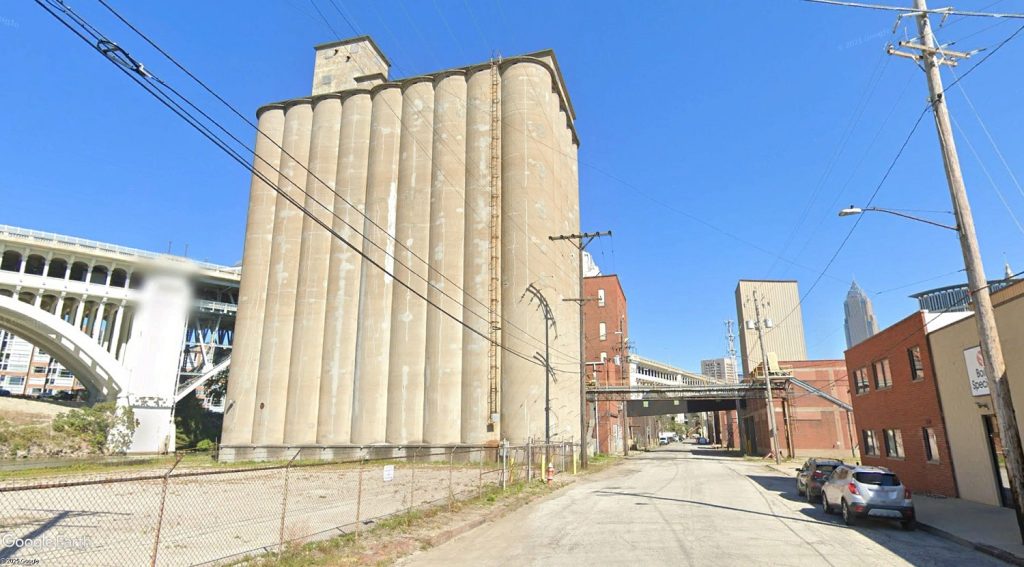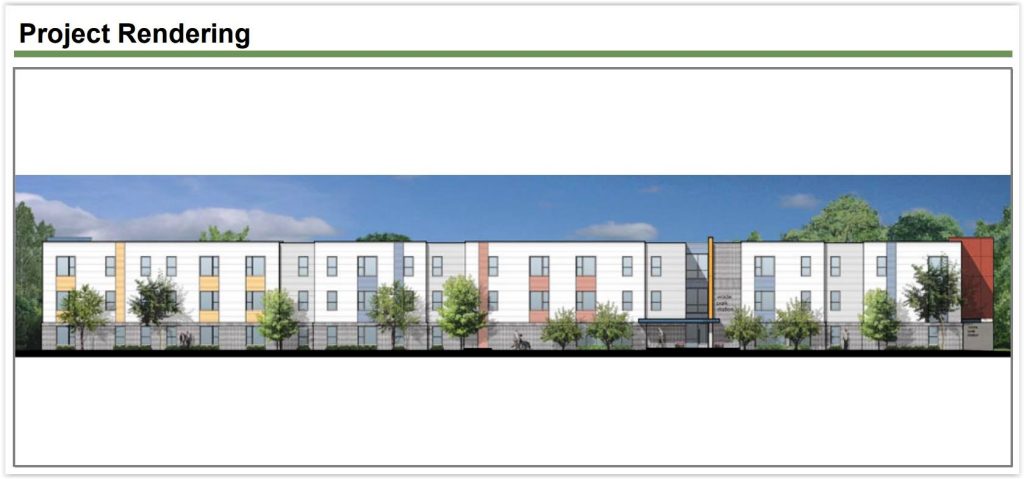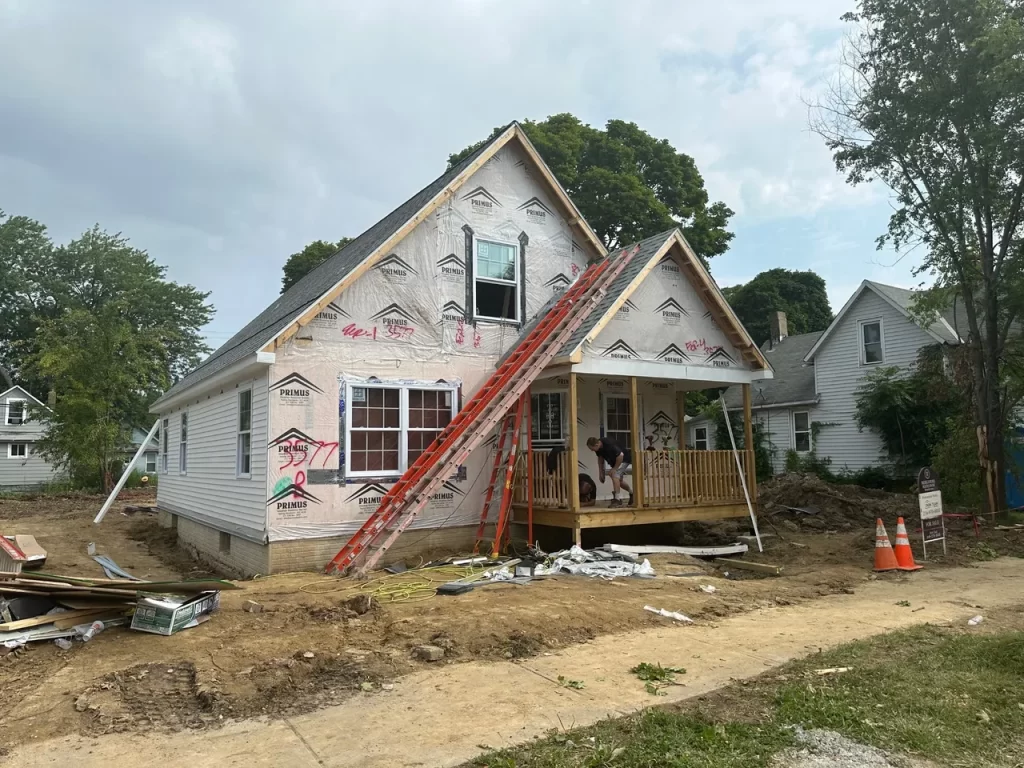After months of speculation and rumor about a scaled-down design for Stark Enterprises’ downtown Cleveland megaproject called nuCLEus, revised conceptual site plans for the project were briefly posted on Stark’s web site earlier today. They apparently were posted in error or posted prematurely because they were since taken down. All references to nuCLEus were briefly removed from Stark’s website but since restored using an aerial graphic showing only the existing parking lot at the proposed site.
Stark representatives have yet to respond to an e-mail seeking updates about the nuCLEus project. Nor did they comment on why the new conceptual graphics and promotional brochure were posted earlier today and soon removed. Before they were removed, the nuCLEus page was shown as updated in January 2019. So clearly there is activity regarding this project.
In fact, it’s possible that Stark has enough resources to build the scaled-down version of nuCLEus, which is still a very large project measuring approximately 2 million square feet. The old design showed a single 54-story residential tower connected by a four-story hotel suspended like a bridge to another, shorter building with office space. The vertical structures were to built on top of a pedestal of parking over ground-floor retail and restaurants.
The preliminary new design shows two disconnected towers — one for residential (much shorter) and the other for offices (about twice as tall as before) — atop the parking pedestal over ground-floor retail, restaurants and food halls. There are about seven floors of parking topped by an amenity/lobby level. The taller tower is the office building, offering 15 floors and higher ceilings than the 14-story residential building. The larger office and smaller residential components jibe with recent rumors about the project being scaled down.
From street level, an observer would look up to?a 25-story office tower and a 22-story residential tower, including the parking, amenity and retail levels below, according to the preliminary design. The residential building would also cascade down over the Prospect Avenue side of nuCLEus’ parking structure, effectively hiding it. The Huron Avenue side, however, would have the parking deck exposed as its facade, albeit with ground-floor retail/restaurants. A six-lane ingress/egress for the parking garage and loading docks would be on East 4th which Stark had previously proposed closing to vehicular traffic north of High Avenue.
Between the residential and office towers, Stark would retain his Melbourne, Australia-inspired laneway — a narrow pedestrian walkway lined with shops, restaurants and food halls. It will compete with the historic East 4th District that’s popular most evenings, but especially with people attending the many sporting events, concerts and other shows at Gateway (Quickens Loans Arena and Progressive Field).
Stark signaled some possible momentum on nuCLEus last month when he sold his downtown Cleveland headquarters to Rlfed Manager LLC, a firm controlled by Yaron Kandelker, an Israeli investor with property holdings in Northeast Ohio. Stark Enterprises planned to move its nearly 20,000 square feet of headquarters offices from 1350 W. 3rd St. to nuCLEus upon completion of the $500+ million project.
Also motivating Stark to move forward on nuCLEus is an agreement with law firm Benesch to occupy 66,500 square feet of office space at the new development. The agreement remains in place despite Benesch extending its lease at 200 Public Square until 2022. Meanwhile, a nearly 50,000-square-foot entertainment venue called Cleveland Live! also agreed to locate at nuCLEus, as did the Ohio debut of Starbucks Reserve, an upscale coffee bar, and HopCat, a restaurant and craft beer bar. Shake Shack also sought to open at nuCLEus but grew impatient with its lack of progress?and opened instead in the Garfield Building on Euclid Avenue and East 6th Street.
| Building cross-section view of the scaled-down nuCLEus development in downtown Cleveland. (Stark) |
In the last two years, Stark tried to initiate two innovative financing schemes to provide additional public funding to his original plan for nuCLEus. The first was a $120 million Cleveland school district property tax increment financing mechanism from which Stark would give back $18 million to help finance school facility construction.
When that fizzled, Stark presented to the Ohio General Assembly a bill that would encourage insurance companies to finance up to 10 percent of large real estate developments that met certain transformational characteristics. NuCLEus could have benefited from more than $50 million in tax credits from that scheme which passed the Ohio House unanimously but didn’t pass the Ohio Senate before the clock ran out on the 2018 legislative session.
Those proposed schemes suggest that Stark had a $50 million to $100 million gap in his capital stack for nuCLEus. In other words, Stark Enterprises was able to amass upwards of $400 million for the project from public and private pledges, commitments and resources already in hand or available to the firm. That might also include new capital from Opportunity Zone funds (downtown Cleveland is located in an Opportunity Zone) and from real estate investment trusts that are increasingly willing to take lower returns from longer-term investments in low-rent markets like Cleveland.
A smaller nuCLEus would produce less revenue, but it’s still a very large project. The new conceptual massing for the scaled-down shows that the roughly 2 million square foot development would be split roughly evenly between parking and non-parking uses. At current construction prices, the revised design for nuCLEus could cost as little as $350 million. If so, it’s possible that Stark has the resources necessary to move forward with this new plan.
END





So it won't even be taller than the at&t building??? When will the city start making buildings that challenge the key tower and Tower city!!!